My Blog
RESEARCH
INTRODUCTION
A music video is a short film that integrates a song with imagery, and is produced for promotional or artistic purposes. Modern music videos are primarily made and used as a marketing device intended to promote the sale of music recordings. There are also cases where songs are used in tie-in marketing campaigns that allow them to become more than just a song. Tie-ins and merchandising can be used for toys or for food or other products. Although the origins of the music video date back to musical short films that first appeared in the 1920s, they again came into prominence in the 1980s when the channel MTV (originally "Music Television") based their format around the medium. Prior to the 1980s, these kinds of videos were described by various terms including "illustrated song", "filmed insert", "promotional (promo) film", "promotional clip", "promotional video", "song video", "song clip" or "film clip".
Music videos use a wide range of styles and contemporary video-making techniques, including animation, live action, documentary, and non-narrative approaches such as abstract film. Some music videos combine different styles with the music, such as animation and live action. Combining these styles and techniques has become more popular because of the variety for the audience. Many music videos interpret images and scenes from the song's lyrics, while others take a more thematic approach. Other music videos may not have any concept, being merely a filmed version of the song's live concert performance.
HISTORY
In 1894, sheet music publishers Edward B. Marks and Joe Stern hired electrician George Thomas and various performers to promote sales of their song "The Little Lost Child". Using a magic lantern, Thomas projected a series of still images on a screen simultaneous to live performances. This would become a popular form of entertainment known as the illustrated song, the first step toward music video.
Unofficial music videos
Unofficial, fan-made music videos ("bootleg" tapes) are typically made by synchronizing existing footage from other sources, such as television series or movies, with the song. The first known fan video, or songvid, was created by Kandy Fong in 1975 using still images from Star Trek loaded into a slide carousel and played in conjunction with a song. Fan videos made using videocassette recorders soon followed.[89] With the advent of easy distribution over the internet and cheap video-editing software, fan-created videos began to gain wider notice in the late 1990s. Videos are sometimes known as OPV, Original Promotional Videos (or sometimes Other People's Videos). A well-known example of an unofficial video is one made for Danger Mouse's illegal mash-up from his The Grey Album, of the Jay-Z track Encore with music sampled from the Beatles' White Album, in which concert footage of the Beatles is remixed with footage of Jay-Z and rap dancers.[90]
In 2004, a Placebo fan from South Africa[91] made a claymation video for the band's song "English Summer Rain" and sent it to the band. They liked the result so much that it was included on their greatest hits DVD.
TYPES OF MUSIC VIDEOS
Performance Music Videos
This is the staple, it is the oldest type of music video and most videos consist of this. Performance music videos are exactly that, the artist(s) performing the song – but it doesn’t have to be that simple. Where are they performing? It could be in front of an audience which would make it a live stage performance, it could be at a location that matches the feel of a song like the grounds of a country house or how about in a recording studio with acoustic instruments making it a live lounge video. How it’s shot, where it’s shot and how it’s lit are important decisions to make because it will influence the outcome of the video.The good thing about a performance video or even performance elements in a video is that it can fit anywhere and with any artist. How? Simple; you shoot in the style that suits the artist or song. It can be simple and dressed down focusing on really good lighting or it could be something huge and spectacular, it can focus on a massive dance routine or the artist’s sole performance.

Narrative Music Videos
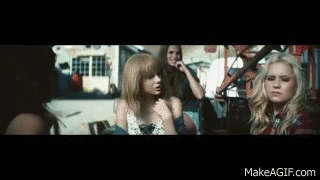
Eventually people got tired of filming performances and putting them on TV like The Jackson 5’s Rockin’ Robin and realised they could use their music videos to tell stories… just like in films.
Narrative music videos are music videos with a story; they have a beginning, middle and end. This allows directors to tell the stories they want, how they want and even in the genres they want. You can tell a story from start to finish like Drake’s Hold On, We’re Going Home, show parts of what seems like a bigger story like The 1975’s Robbers or even an alternative narrative like our very own Remedy by The New Citizen Kane where the audience makes up their own mind on the story. This is where the film maker can really shine because they can tell a story in the genre and cinematography of their choosing, sometimes without adhering to the rules of storytelling.
Songs for the most part are already stories, even if the song doesn’t have lyrics, they all tell stories.
Concept Videos
What is a concept music video? The best description I can give is that it is an artistic expression. There’s an idea behind it or theme that drives the visuals like Childish Gambino’s Sweatpants. Now these can be quite fun because where narrative videos can have less rules; concept videos have none. It’s a limitless playground where anything is possible. CGI? Sure. Stop motion fun? Of course. A series of shots depicting different people’s expressions? Absolutely! Interpreting a song and then bringing it to life in a way that only you (or the director) could like the hauntingly spectacular Feathers Falling by Amani.
Now I’m not saying every type of video has a place, but most do. You wouldn’t imagine One Direction having an artistic concept video, this is an approach more akin to non-mainstream or non-pop music. Due to concept music videos not necessarily telling a story (at least via conventional methods), it’s important that the video captures the feel and tone of the song and this approach doesn’t marry well with pop music and their audiences unless it’s a cross-genre.
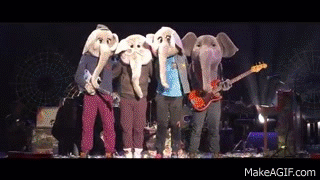
Lyric Videos

A lyric video is a music video where the lyrics appear on screen. The first level of innovation came by making the font and visuals match the song – sweet font and vibrant colours for a bubble gum pop song, edgy font and more hard-core imagery for heavy metal. The next level of innovation was the style of animation for the visuals and text – slow and sexy or fast and impactful. Those are the basics and can be seen in Jodie Abacus’ video I’ll Be That Friend. Notice the vibrant images matching the tone of the song and the font design? It feels right. But lyric videos don’t stop there, it can even be fused with other video types to create something cool and new. Take Ariana Grande’s Everyday which fuses lyric and performance videos or one of my personal favourites Suit & Tie from Justin Timberlake ft. Jay Z which combines lyric, narrative, concept AND animation! Now how cool is that?
Animated Music Videos
The term “animation” is an umbrella term. We sometimes get artists saying they’d like an animated music video, that could mean anything between cell animation like old fashioned cartoons, CG like Monsters Inc, stop motion like Wallace and Gromit, filming against Green Screen then placing them into another environment and many other variations. They all require different skill sets and disciplines, each very respectable. Animation is basically giving movement to something. In the context of music videos animation can be applied to all types; it can be a narrative stop motion video, a performance video against green screen or a 3D CG concept video full of fun and weird shapes.
Animation is by definition – versatile. Animation should only be used when it’s right, it should feel right and not used as a gimmick. I’m a huge fan of stop motion and the amount of skill, talent and discipline that goes into it and history has some fantastic examples .
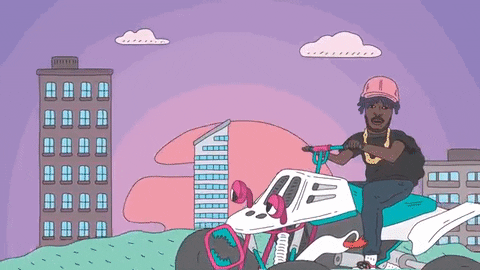
STYLES OF MUSIC VIDEOS
Animation
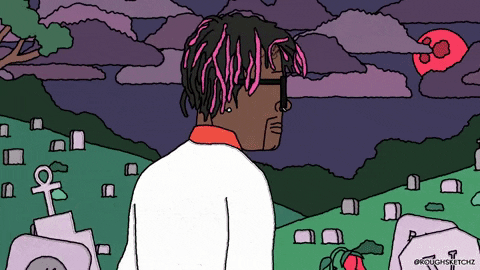
Animation is a growing new form of music videos. Some genres tend to use more animation in their music videos. It is more common in Indie Rock and sometimes Dance. There are three types of animation style music videos: traditional hand-drawn, stop motion and digital. Animation videos tend to be more quirky and unusual because they can be as impossible and outrageous as they can.
"Move Your Feet" is a single by Junior Senior, that was released in May 2003. The style of music generally fits into the pop/hip-hop genre of music. So to portray that same style in the music video, they had to create something original and upbeat.
This music video is the band's most notable video because of its Shynola Animation Art theme that involves a pixel art figure of Junior Senior and a squirrel. Throughout most of the video, we see the figures dancing as well as a lot of colours and lyrics.
In Concert
In Concert music videos have a sense of realism and they appeal to viewers who perhaps cannot go and see them in concert all the time, so they can see what it looks like for a change. It also might give viewers an incentive to go and see the band live. Sometimes they can be staged to look like they are live. Feel This Moment" is a song by Pitbull featuring Christina Aguilera that was released in January 2013. The song is about stopping to take a moment and appreciate life. Set to a thumping club beat, the rapper spits "Lets stop time and enjoy this moment."
So I would guess that he tried to think of something that would be a great 'moment' in his life; watching a crowd of people screaming his name to his music. Throughout the music video, we see some shots of him wearing casual clothes, rapping alone in a small room , before (in an expensive suit) he jumps/walks/elevates into a huge arena filled with thousands of screaming fans.

Narrative
Narrative music videos tell a story that normally relates to the song. Sometimes the story is fictional and sometimes it's non-fictional. These videos are popular because they keep the viewers interested and they normally remember the story and the song because of the video.
"Same Love" is a single by Macklemore and Ryan Lewis that was released in July 2012. It was written in support of same-sex marriage specifically referenced to Washington Referendum 74 (which is a Washington state referendum to approve or reject the February 2012 bill that would legalise same-sex marriage in the state).
The video goes through stages in a man's life when he loved his other half, and how he deals with it and becomes as happy as anyone would in a relationship. Most narrative music videos win a lot of awards because of the ideas and messages that are portrayed. They deserve it because directors and writers have to think well about how they want the viewers to watch it.
"Same Love" won 'Best Video with a Social Message' at the MTV VMA's in 2013.

Pastiche
Pastiche music videos represent a small imitation that is used respectfully from another form of media i.e. film or TV show. This idea is a good way to get a bigger audience because fans of the artist will know about the imitation and the fans of the other form of media will find out about the artist.
"Material Girl" is a single by Madonna that was released in November 1984. The song is about a girl who loves diamonds and jewellery and material gifts.
The music video shows Madonna wearing a rich expensive pink dress and showered in diamonds and jewellery. She is surrounded by a lot of men dancing with her.

Impressionist
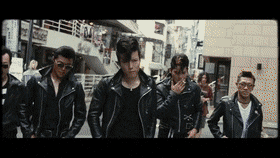
Impressionist means "an artists take/impression on something". So music videos that have a particular theme or style that is portrayed in a unique way by the artist means that it is an impressionist music video.
"Get Away" is a single by Snoop Lion featuring Angela Hunte and was released in January 2014.
The music video fits into the style of both animation, homage and impressionist. It pays homage to the '90s themed Pokemon Games. Nostalgia will flow for fans of the classic Game Boy release as they watch an 8-bit version of Snoop Lion patrolling the reconstructed world reminiscent of the original games.
He even battles a trainer, Major Lazer, who co-produced the track.
Parody
Parody music videos are designed to mock or tease an original piece of work, normally in a bad way. It is very similar to pastiche, except it generally has a bad and funny way of representing it. Parodies have got a lot more popular in recent years and some Youtube Artists have become famous because of their parodies. "22" Parody is a single by Bart Baker that was released in April 2013. It is a parody of the single "22" by Taylor Swift. In the original music video by Swift, she goes through a day in life when she is 22 years old and shows how most people at her age are at the point in their lives when they can have so much fun.But in this parody version, Baker uses the same tune but doesn't mock the original meaning of the song.
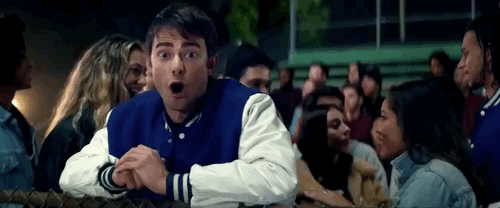
Surrealist
Surrealist music videos are videos that contain a style that are so strange and unreal that it's almost impossible that the situation would ever happen. Surrealist videos sometimes contain a lot of animation. They are sometimes fun and exciting which does appeal to younger children. But some music artists take an impression of a certain artist or sculptor and use their style in the music video.
"Year 3000" is a single by Busted that was released in January 2003. The song describes how the band thinks the world will be like in almost 1000 years. As you could imagine before even listening to the song or watching the video, this idea has endless possibilities for imagination. So surrealism in this video is almost vital.
The story follows Busted getting into a "flux-capacitor" which travels into time to the Year 3000. To make the story more interesting they used animation as well.

Interpretation
Interpretation is a form of music video that means a literal style of video. This means that whatever you hear in the song, is exactly presented in the video. Sometimes it can be word for word in the lyrics, or sometimes it could be an overall story in the theme of the song.
"Get Lucky" is a song that is performed by Daft Punk, however it was covered by Skylar Grey. She re-creates her own version of the song and music video. Throughout the entire video she shows how she is literally very lucky. In the 4 minutes of this video, she wins a car in a game show, she passes every green light when she drives home.
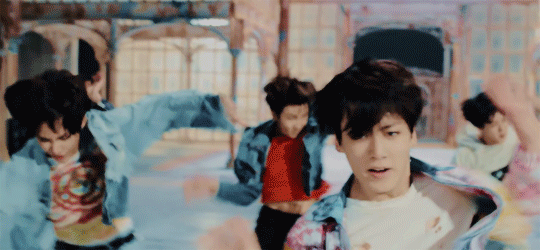
Homage
Homage style music videos mean that the video pays a tribute to a particular time or event. It is a way for artists to show their respect to others. These videos can influence viewers and make them remember or sympathize for a specific time or place.
"Hey Brother" is a song performed by Avicii. The music video was released in December 2013. This music video pays homage to the men and women of the armed forces in the US. The video contains clips from the Vietnam War and shows a young boy who imagines his father (who died in the Vietnam War) as the older brother he never had.
Influence of Commercials
Music videos that have an influence of commercials are videos that sometimes mention or involve their whole video around a particular product. This is a good way to advertise certain products, because fans of the artists will take note of the products and be persuaded into thinking that it must be a good product if celebrities are using it.
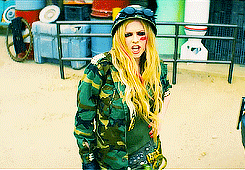

Referencing
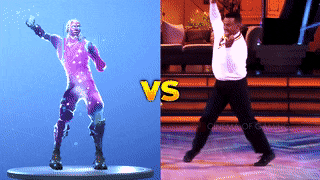
Referencing in music videos is a way of portraying a certain other subject. Soundtrack videos sometimes have references to the film themselves. If a music video contains certain references from a film then it creates a bigger audience, a lot like pastiche films.
Beyonce's nickname "Honey Bee" in the video is a clear reference to "Honey Bunny" which was the nickname given to Yolanda, who was one of the two robbers in the famous diner scene of Pulp Fiction.
The "To Be Continued..." title card at the end of the video is a great similarity to John Travolta's line in Pulp Fiction.
The font, style and colours of the text in the video are very similar to the text in Jackie Brown.
When the two girls are having banter in the car, it is a very clear reference of the style in Death Proof.
Before the music video of "Telephone" was created, Lady Gaga had a meeting with Quentin Tarantino and discussed the plot and style of the music video, so there was a big reason that all these references were made.
CONVENTIONS
LYRIC INTERPRETATION
When creating a music video, one of the conventions you will think about is lyric interpretation. When a director listens to a song, they will createa video based around what their interpretation of the lyrics are. Ourown interpretation may then be based around the visuals produced aswell as our own opinion of the lyrics. A good example for demonstratingdifferences in interpretation is Bob Seger and the Silver Bullet Band.
Turn the Page. Upon it’s original release, it was interpreted to be about a musician who got anxious when looked at. However, when Metallicadid a cover of the song, a second music video was released for their version. This video interpreted the song as about a woman who is aprostitute to get money to look after her young daughter.
EXTENDING SONGS' MEANING
A song’s meaning can be extended which means that the action and images featured in the music video are being used to the promote the meaningof the song. This leaves the song open to other interpretations. An example of this is in the music video for Madonna’s Like A Prayer which features imagery of burning crosses and what appears to be a depiction of Jesus as a black man whom she kisses.
CONSOLIDATING SONGS' MEANING
Rather than extending a song’s meaning, you can consolidate it so that, rather than opening the meaning of a song, you are using images joinedwith the sound and music which has an emphatic effect on the message that the music video is promoting. An example of this is for Avenged Sevenfold’s song ‘Gunslinger’ which is about those that you leave behind when going to war.
ALLUSION
Allusion is when a reference to a person, existing text, place or event ismade within a music video. It could be fairly obvious or totally discreet but either way, many music videos feature conventions such as this. For example, in the music video for Metallica’s ‘All Nightmare Long’ which makes reference to the Tunguska event in 1908 as well as thespeculative conjecture that circulated around it.
LINKS TO OTHER ARTISTS
In a different way to allusion, music videos may also make reference toot her artists. This means that the video could be either paying homage to that artists style or parodying their style (or previous videos). An example of this is David Brent’s ‘If you don’t know me by now’ where
Ricky Gervais is featured paying homage to the style of artists such as Simply Red.
THEORISTS
Andrew Goodwin

Goodwin states that ‘Music videos ignore common narrative as they are essentially advertisements. As consumers, we make up our own meaning of a song in our minds: a music video can anchor meaning and gives the record company/artist a method of anchoring meaning.’ Andrew Goodwin expressed that the editing of the film is cut to the beat. This allows the viewer to follow the narrative (if a concept video) at the same tempo as the music and subconsciously follow the plot easier. Also the visuals displayed are usually repeated, which emphasises the repetition of the lyrics and rhythm in the song.
Music videos demonstrate genre characteristics (e.g. stage performance in a metal video, dance routine for a girl boy band.)
This convention explains how Goodwin notice a music video’s visuals either had a complete similarity or direct contrast to the lyrics of the song.
An example of this is within the music video ‘Someone Like You’ by Adele’ a lyrical phrase includes ‘for me, it isn’t over’, there is reaction shot of the artist, appearing to be very emotional in connection with this. This make the audience sympathise with Adele as a result.
There is a relationship between the lyrics and visuals (illustrative, amplifying, or contradicting).
Goodwin identified that the visuals within a music video may be edited in time to the lyrics/ change in tempo of the music. He also stated that the visual are commonly repeated within a chorus to emphasize the repetition in lyric and beat.
Genre-related style and iconography is present.
Goodwin recognised that most artists/directors have a certain style repeating certain actions within theory music videos in order to establish this as their ‘trademark’ and therefore allowing their to be recognized due it to reoccurring often. This represents the style of the music the artist is represent and is a marketing strategy in order to be remembered in years to come.
The demands of the record label include the need for lots of close-ups of the artist, and the artist may develop motifs which recur across their work (a visual style).
Goodwin identified that it is a common feature for record labels to use close ups of the artist/vocalist in order to promote the sales of the individual song and album/single. This convention is used in order to show the artist throughout the video is most common with female artist as provocative angles are often used to create sexual imagery of the artist following Laura Mulvey’s Male Gaze Theory causing a fetish from the audience towards the artist.
There is frequently reference to the notion of looking (screens within screens, telescopes, etc.) and particularly voyeuristic treatment of the female body.
Goodwin recognised that many music videos tend to include voyeuristic images and camera angles of women in order to entice a male audience’s interest in the artist also the lyric to which these shots represent. For example, in the artist Rihanna’s music video ‘What’s my Name’. We can see at this point Rihanna walking through a supermarket. There is an over the shoulder shot of a man, who is out of focus looking at her. With the misé-en-scene used in the scene in terms of costume Rihanna wears a pair of revealing shorts with fluorescent colours.
There is often inter-textual reference (to films, TV programmes, other music videos, etc).
Goodwin recognised that it was not uncommon for a viewer to notice either the visuals or lyrics of song to be a direct reference to another media text. This used to engage the audience and provide them gratification if they recognise the link. For example in MIKA’s ‘Popular Song’ there is a reference to the music ‘Wicked’ in terms of lyrics and melody in the chorus.
Roland Barthes


Roland Barthes was a French literary theorist, philosopher and critic. Barthes’ ideas explored a diverse range of fields and he influenced the development of schools of theory including structuralism, existentialism and social theory to name but a few.
Barthes describes a text as. “a galaxy of signifiers, not a structure of signifies; it has no beginning; it is reversible; we gain access to it by several entrances, none of which can be authoritatively declared to be the main one; the codes it mobilises extend as far as the eye can read, they are indeterminable. The systems of meaning can take over this absolutely plural text, but their number is closed, based as it is on the infinity of language.” – 1974.
Barthes argued that the reader produces new meanings when reading a text, making use of previous experience. Therefore, different people read different things from a text. Texts may be open, this means that they may have many meanings or interpretations. Texts may also be closed, this means that there is only one meaning. Barthes had a series of narrative codes. The most well known is the enigma code. This is the ‘hook’ or mystery to be resolved for the audience. He also believed the narrative was made up of ‘signifiers’, objects that brought meaning to the narrative.
Music videos often create predictable ideas and representations about people, places and society and ‘Myths’ are created, which seem to support the dominant ideology of society. As such, it could be argued that most mainstream music videos are reactionary.
Barthes explains that ‘myth is a type of speech’. What Barthes means by this is that myth is a system of communication. Myth is not a particular object but rather the ‘the way in which (an object) utters a message’. Barthes explains that myth ‘is a second-order sociological system‘. Barthes is arguing that myth is a metalanguage; an overarching language which rationalises and organises thought and perception. Myth is the system of communication which naturalises the political nature of a products’ consumption and production; myth is a system of communication which naturalises dominant cultural and historical values and attitudes.
Stereotypically in the media ‘Men were much more likely to adventurous, active, and victorious, whereas women were more frequently shown as weak, ineffectual, victimized, supportive, or laughable or merely ‘token females.’ Some media texts challenge these stereotypical gender representations such as in the film 'Tombraider' in which 'Laura Croft' plays the leading protagonist, seen as 'adventurous'.
Vladimir Propp


Propp identified a sequence of narrative elements (or 'functions') that typically occurred within Russian fairy tales. He identified 31 functions in Russian folklore and fairy tales. These functions occurred in a typical order within each story, with some variation. This type of structural analysis of folklore is the "syntagmatic" manner of assessment (as termed following Lévi-Strauss 1964: 312). Another example of syntagmatic analysis is the Hero's journey. This focus on the events of a story and the order in which they occur is in contrast to another form of analysis, "paradigmatic" (cf. Sebag 1963:75). That describes instead the underlying pattern (usually based upon a priori binary principle of opposition) of the folkloric text. For paradigmatic analysis, elements of the plot may be taken out of their "given" chronological order within the story and regrouped in various analytic schemes.
Respectively equivalent to syntagmatic and paradigmatic are the terms "diachronic" and "synchronic". Diachronic covers the sort of analysis that conveys a sense of traversing the highs and lows of a story, like riding the pattern of a sine wave.[2] The second term, synchronic, is where the story is instead absorbed as a whole, like the pattern of a circle. Most literary analyses are synchronic, offering a greater sense of unity among the components of a story. Although both structural analyses convey partial information about the story, each angle of analysis delivers a different set of information.
After the initial situation is depicted, the tale takes the following sequence of functions:
-
ABSENTATION: A member of the hero's community or family leaves the security of the home environment. This may be the hero themselves, or some other relation that the hero must later rescue. This division of the cohesive family injects initial tension into the storyline. This may serve as the hero's introduction, typically portraying them as an ordinary person.
-
INTERDICTION: A forbidding edict or command is passed upon the hero ('don't go there', 'don't do this'). The hero is warned against some action.
-
VIOLATION of INTERDICTION. The prior rule is violated. Therefore the hero did not listen to the command or forbidding edict. Whether committed by the Hero by accident or temper, a third party or a foe, this generally leads to negative consequences. The villain enters the story via this event, although not necessarily confronting the hero. They may be a lurking and manipulative presence, or might act against the hero's family in his absence.
-
RECONNAISSANCE: The villain makes an effort to attain knowledge needed to fulfill their plot. Disguises are often invoked as the villain actively probes for information, perhaps for a valuable item or to abduct someone. They may speak with a family member who innocently divulges a crucial insight. The villain may also seek out the hero in their reconnaissance, perhaps to gauge their strengths in response to learning of their special nature.
-
DELIVERY: The villain succeeds at recon and gains a lead on their intended victim. A map is often involved in some level of the event.
-
TRICKERY: The villain attempts to deceive the victim to acquire something valuable. They press further, aiming to con the protagonists and earn their trust. Sometimes the villain make little or no deception and instead ransoms one valuable thing for another.
-
COMPLICITY: The victim is fooled or forced to concede and unwittingly or unwillingly helps the villain, who is now free to access somewhere previously off-limits, like the privacy of the hero's home or a treasure vault, acting without restraint in their ploy.
-
VILLAINY or LACKING: The villain harms a family member, including but not limited to abduction, theft, spoiling crops, plundering, banishment or expulsion of one or more protagonists, murder, threatening a forced marriage, inflicting nightly torments and so on. Simultaneously or alternatively, a protagonist finds they desire or require something lacking from the home environment (potion, artifact, etc.). The villain may still be indirectly involved, perhaps fooling the family member into believing they need such an item.
-
MEDIATION: One or more of the negative factors covered above comes to the attention of the Hero, who uncovers the deceit/perceives the lacking/learns of the villainous acts that have transpired.
-
BEGINNING COUNTERACTION: The hero considers ways to resolve the issues, by seeking a needed magical item, rescuing those who are captured or otherwise thwarting the villain. This is a defining moment for the hero, one that shapes their further actions and marks the point when they begin to fit their noble mantle.
-
DEPARTURE: The hero leaves the home environment, this time with a sense of purpose. Here begins their adventure.
-
FIRST FUNCTION OF THE DONOR: The hero encounters a magical agent or helper (donor) on their path, and is tested in some manner through interrogation, combat, puzzles or more.
-
HERO'S REACTION: The hero responds to the actions of their future donor; perhaps withstanding the rigours of a test and/or failing in some manner, freeing a captive, reconciles disputing parties or otherwise performing good services. This may also be the first time the hero comes to understand the villain's skills and powers, and uses them for good.
-
RECEIPT OF A MAGICAL AGENT: The hero acquires use of a magical agent as a consequence of their good actions. This may be a directly acquired item, something located after navigating a tough environment, a good purchased or bartered with a hard-earned resource or fashioned from parts and ingredients prepared by the hero, spontaneously summoned from another world, a magical food that is consumed, or even the earned loyalty and aid of another.
-
GUIDANCE: The hero is transferred, delivered or somehow led to a vital location, perhaps related to one of the above functions such as the home of the donor or the location of the magical agent or its parts, or to the villain.
-
STRUGGLE: The hero and villain meet and engage in conflict directly, either in battle or some nature of contest.
-
BRANDING: The hero is marked in some manner, perhaps receiving a distinctive scar or granted a cosmetic item like a ring or scarf.
-
VICTORY: The villain is defeated by the hero – killed in combat, outperformed in a contest, struck when vulnerable, banished, and so on.
-
LIQUIDATION: The earlier misfortunes or issues of the story are resolved; object of search are distributed, spells broken, captives freed.
-
RETURN: The hero travels back to their home.
-
PURSUIT: The hero is pursued by some threatening adversary, who perhaps seek to capture or eat them.
-
RESCUE: The hero is saved from a chase. Something may act as an obstacle to delay the pursuer, or the hero may find or be shown a way to hide, up to and including transformation unrecognisably. The hero's life may be saved by another.
-
UNRECOGNIZED ARRIVAL: The hero arrives, whether in a location along their journey or in their destination, and is unrecognised or unacknowledged.
-
UNFOUNDED CLAIMS: A false hero presents unfounded claims or performs some other form of deceit. This may be the villain, one of the villain's underlings or an unrelated party. It may even be some form of future donor for the hero, once they've faced their actions.
-
DIFFICULT TASK: A trial is proposed to the hero – riddles, test of strength or endurance, acrobatics and other ordeals.
-
SOLUTION: The hero accomplishes a difficult task.
-
RECOGNITION: The hero is given due recognition – usually by means of their prior branding.
-
EXPOSURE: The false hero and/or villain is exposed to all and sundry.
-
TRANSFIGURATION: The hero gains a new appearance. This may reflect aging and/or the benefits of labour and health, or it may constitute a magical remembering after a limb or digit was lost (as a part of the branding or from failing a trial). Regardless, it serves to improve their looks.
-
PUNISHMENT: The villain suffers the consequences of their actions, perhaps at the hands of the hero, the avenged victims, or as a direct result of their own ploy.
-
WEDDING: The hero marries and is rewarded or promoted by the family or community, typically ascending to a throne.
Some of these functions may be inverted, such as the hero receives an artifact of power whilst still at home, thus fulfilling the donor function early. Typically such functions are negated twice, so that it must be repeated three times in Western cultures.
GENRES
A music genre is a conventional category that identifies some pieces of music as belonging to a shared tradition or set of conventions. It is to be distinguished from musical form and musical style, although in practice these terms are sometimes used interchangeably.not in citation given] Recently, academics have argued that categorizing music by genre is inaccurate and outdated.
Music can be divided into different genres in many different ways. The artistic nature of music means that these classifications are often subjective and controversial, and some genres may overlap. There are even varying academic definitions of the term genre itself. In his book Form in Tonal Music, Douglass M. Green distinguishes between genre and form. He lists madrigal, motet, canzona, ricercar, and dance as examples of genres from the Renaissance period. To further clarify the meaning of genre, Green writes, "Beethoven's Op. 61 and Mendelssohn's Op. 64 are identical in genre – both are violin concertos – but different in form. However, Mozart's Rondo for Piano, K. 511, and the Agnus Dei from his Mass, K. 317 are quite different in genre but happen to be similar in form." Some, like Peter van der Merwe, treat the terms genre and style as the same, saying that genre should be defined as pieces of music that share a certain style or "basic musical language." Others, such as Allan F. Moore, state that genre and style are two separate terms, and that secondary characteristics such as subject matter can also differentiate between genres. A music genre or subgenre may also be defined by the musical techniques, the style, the cultural context, and the content and spirit of the themes. Geographical origin is sometimes used to identify a music genre, though a single geographical category will often include a wide variety of subgenres. Timothy Laurie argues that since the early 1980s, "genre has graduated from being a subset of popular music studies to being an almost ubiquitous framework for constituting and evaluating musical research objects".
Among the criteria often used to classify musical genres are the trichotomy of art, popular, and traditional musics.
Alternatively, music can be divided on three variables: arousal, valence, and depth. Arousal reflects the energy level of the music; valence reflects the scale from sad to happy emotions, and depth reflects the level of emotional depth in the music. These three variables help explain why many people like similar songs from different traditionally segregated genres.
Theorists
Andrew Goodwin
Music videos demonstrate genre conventions. Certain features are expected out of a video depending on the genre of the music. Rock bands tend to opt for stage performances, showing the singer shouting down a microphone, the guitarists thrashing the chords and the drummer putting all their body into hitting the drums, expressing how ‘tough’ and ‘hard’ rock is.There is a relationship between the music and the visuals – both the lyrics and the tone. Lyrics match up with the Music Video’s visuals. When you hear a song, you feel the emotion and the message wanting to be put across by the artist which is usually what is then seen in the music video. Themes, mise-en- scene and events of the video match with lyrics of the song, to help to portray the message of the song. The tone of the music must match the visuals featured in music video. The cuts and edits of the video are in sync the rhythm and beat of the song matching cuts or effects specific drum beats or notes.
Sven E Carlsson
According to Sven E Carlsson, music videos can fall under two categories: Performance and Conceptual. Performance – this is where the videos mostly focus on the artist/artist’s in some way. There can be three types of performance, dance performance, song performance and instrumental performance. The point of the music video is to show the artist off as much as they can.
Performance • When it comes to performance, Carlsson believes there are three types: • Commercial Exhibitionist - the performer becomes an item throughout the video as the point is just to advertise themselves. The performer is like an object for the audience and the music video is like an advert for them. • Televised Bard – this is another type of performance where the singer is singing about a story and uses the images around them as personal images. • Electronic shaman – in some videos the shaman isn’t shown and the story they tell is anchored by the images of the video instead of them actually being involved. • What type of performance is this?
Conceptual • Within the music video, the artist will use images unrelated to them, which may have artist ambitions. This may include shots of scenery, or narrative shots which take the focus away from the artist.
Deborah Holdstein
Messages and Structures The three ‘striking qualities’ of a star in a music video: 1. The star as a fantasy ‘seer’ or prophet 2. The star as a political commentator or narrator 3. The star as a mediator or point of resolution for social conflict
Messages and Structures -“Videos seem to divide into two categories: Those with allegedly explicit ‘political’ themes, and those which revive the traditional U.S. film musical.” The fantasy video is based entirely on performance. This format puts“the group or star in a mythical, medieval, exotic or surrealistic series of images and locations.” “Videos make the artist more accessible to the fans. When they come to a performance, then they bring or wear things they‘ve seen in the video.” “In the past, artists portrayal will only be left to the viewers imagination or how they are seen in concert, the record album cover pose, photographs and interviews in Rolling Stone, Time.” But nowadays, “the video image is quicker and more powerful.”
Different music videos for different genres
-
Electronic Dance Music: Generally referred as EDM, this form of music is produced by DJs who add dozens of tones to a piece to create unique music. You can hear them in clubs or even live, depending upon your accessibility for the same. In the early twenties, electronic dance music was known in the form of Jamaican dub music, the electronic music of Kraftwerk, the disco music of Giorgio Moroder, the Yellow Magic Orchestra and many more.
-
Rock Music: Originated as “Rock & Roll” in the United States, Rock music has been rocking the world since the 1950s. It is a form of music that started actually around string instruments, but now uses other modern instruments too making it a little difficult to give it an accurate definition. Its loud and strong beats make it popular among the youths. Some of the rock stars who have popularized the culture include Little Richard, Bill Haley and Chuck Berry while rock bands like Pink Floyd, The Doors, Metallica, Nirvana and Megadeth are the modern bands who have taken the culture by storm.
-
Jazz: Identified with swing and blue notes, Jazz has its roots both in the West African and European culture. It is said that Jazz is “One of America’s original art forms” and boasts a unique combination of creativity, coactions and interactivity. Originating in the late 19th to early 20th century, Jazz has also played an important role in introducing the world to a number of women performers like Ella Fitzgerald, Betty Carter, Abbey Lincol.
-
Rhythm and Blues:Vocalists like Rihanna, Mariah Carey, Beyoncé, Usher and the legendary Michael Jackson have all made it huge in the music industry with their love for this form of music. Originated in the 1940s, this African-American music is a combination of hip hop, funk, dance, pop and soul focusing on themes like relationships, sex and freedom.
-
Techno:You may have listened to a number of techno music while clubbing, but it is Detroit techno that is considered to be the foundation of this form of music. Unlike the days of its emergence, the use of technology today has greatly enhanced the quality of techno style music and popularizing it among people day by day.
-
Country Music:Another popular genre of American music which originated in the 1920s, Country music has its roots from American folk and western music. It is formed using simple forms of instruments ranging from electric and steel guitars to drums and mandolin or mouth organ. Some very popular country music singers include Shania Twain, Johnny Cash Taylor Swift and Kenny Rogers.
-
Electro: A perfect blend of hip hop and electronic music, electro or electro-funk uses drum machine, vocoder and talkbox helping it to distinguish itself from another similar form of music, Disco. Notable artists who have been into this form of music include Arthur Baker, Freeez, Man Parrish and Midnight Star.
-
Indie Rock:Falling in the genre of alternative rock music, Indie Rock originated in the 1980s and has gradually changed the music industry. After a decade, it also gave birth to a couple of sun-genres in related styles such as math rock, emo, noise pop, post rock and lo-fi.
-
Pop Music:“Pop” is a term derived from “Popular” and thus Pop Music is known to be a genre of popular music. With its roots in the rock & roll style, this form can include any form of music ranging from urban and dance to rock, country and Latin. Instruments highly used are electric guitars, synthesizer drums as well as bass and one can listen to this form of music by listening to songs by Britney Spears, Madonna, Beyonce Lady Gaga and of course the “King of Pop”, Michael Jackson.
-
Rap: Men: Eminem- Rap God: This music video represents the criticism Eminem has received and he mocks them and proves to them that he deserves his fame. He does this by rapping faster than any other rap artist at the time and makes the beat sound much stronger than other rap music. All of this represented in the music video through the sci-fi theme and the increase in tension and enthusiasm of the video, up to the point where he raps the fastest in the song. All of this not only makes the lyrics and visuals match, but also allows him to talk to the viewers as he is proving them that he deserves his title of a rapper, which also shows the convention of voyeurism. Finally the editing of the video matches the music which again is another convention of Andrew Goodwin’s. Kanye West- Stronger: This music video is also very sci-fi themed which follows the general conventions for rap music. The sci-fi theme allows the video the keep up with the fast-paced rapping which means the editing will also be fast paced which are all conventions of music videos.
-
Rap: Women: Nicki Minaj- Beez In The Trap: This music video is completely different to men’s videos who rap. This video is a lot heavier than videos by Eminem or Kanye West, which shows the diversity in genders and how maybe women are more dominant in the rap industry. This video also complies to the ‘male gaze’ which shows all women’s bodies to be skinny and ‘idealistic’ for heterosexual men. There is also as lot of voyeurism which again amplifies the male gaze theory. Iggy Azalea- Work: This video also shows the ‘male gaze’ to be superior in female rap music videos but is again a lot heavier than male rap music videos. This again shows, just like ‘Beez In The Trap’ shows women to dominate the rap industry. Finally the editing matches the music which is a convention of music videos. Overall, women’s rap music videos are a lot more sexual than men’s rap music videos which shows how they follow the ‘male gaze’ for heterosexual men. However the music itself is a lot heavier and the video amplifies this, which shows dominance and how they are not restricted to how men want them to be.
Finalizing the music genre
After all the research my team mates and I did, we found out about the different styles and conventions of different music videos. The most trending genre now a days is pop music.So before even starting the main research for our music video like questionnaires etc we already knew what we were about to go for, thus, we decided pop, hip hop music. This was because our target audience are mostly teenagers and adults aging up to 30 years old. The most popular genre that is being used in the music industry is pop music.
1. What is a Pop music video?
Pop music is the genre of popular music that produces the most hits. A hit is a song that sells many copies, and the latest hits are listed every week on the charts. To get on the charts, a song must be released as a single, although most singles are also released on an album. Songs that become hits almost always share certain features that are sometimes called the pop-music formula. They have a good rhythm, a catchy melody, and are easy to remember and sing along to. They usually have a chorus that's repeated several times and two or more verses. Most pop songs are between two and five minutes long, and the lyrics are usually about the joys and problems of love and relationships. Pop songs are produced by groups like the boy band One Direction and the girl group Girls' Generation, and by pop singers like Justin Bieber and Madonna.
Not all hit singles are produced by pop artists. They're also produced by artists from many other genres like country music singers Carrie Underwood and Taylor Swift, rock groups Radiohead and Foo Fighters, folk singers Bob Dylan and Mumford & Sons, singer-songwriters Elton John and Ed Sheeran, contemporary R&B and soul music artists Beyonce and Adele, dance-music artists Daft Punk and Skrillex, and hip hop artists and rappers Kanye West and Eminem. Artists like these produce hit singles by writing songs that follow the pop-music formula but include elements of their own genre, and by doing this they can create their own unique style of pop music. Look at the list of best-selling artists below and notice how many have experience in more than one genre. It's artists like these who are most likely to create new styles of pop music in the future.
-
One Direction - English-Irish pop boy band who dance onstage while singing their many hit songs
-
Katy Perry - American pop and dance-pop artist who began her career singing gospel music
-
Beyonce - American pop and R&B singer who began her career in R&B girl group Destiny's Child
-
Taylor Swift - American pop singer-songwriter who began her career as a country music artist
-
Justin Timberlake - American soul, pop and R&B singer who began with the boy band NSYNC
-
Iggy Azalea - Australian rapper who created her own style of hip hop pop after moving to the US
-
Ariana Grande - American pop, R&B and dance-pop artist who began her career in musical theatre
-
Miley Cyrus - American pop singer who began her career as an actress and country music artist
-
Pharrell Williams - American hip hop artist who's also produced funk, soul, dance and pop hits
-
Eminem - American hip hop producer and rapper who was the best-selling US artist in the 2000s


Codes and Conventions of Pop Music





1. Setting


Many pop music videos use well know locations such as London, New York, California, Miami, etc. This is because many of the artists' target audiences will recognize these places for the atmosphere and party life. Places such as schools, gyms, parks, etc. Are also often used so that the audience can feel closer to their favourite artist.This pop music video is mainly set in a high school however has videos of people from around the world doing the famous dance routine which is shown in the music video. By setting this music video in a high school it shows that the artist's intended target audience are teenagers as they could relate to the high school setting.This pop music video called Wake me up by Avicii was shot in Piru, California. In the music video there is also concert footage which was taken in Miami. These places are well known globally so this will keep the viewer interested in the music video.
Pop music video's narratives often revolve around love or a party lifestyle. This is because many of the artists target audiences are teenagers who are associated with both love and partying. This means that the artist's target audience will want to watch their music videos.
2. Narrative/Audience
3. Editing

Depending on the tempo of the music being either at a slow or fast pace The editing of pop music and Hip Hop videos is very
flexible. This is due to the diversity of the Genres. For example the editing in an artists music such as Adele would be a lot slower compared to that of Katy Perry.. This is evident through the fast past editing in Katy Perrys new song " Hey Hey Hey" which is done as the editing needs to be symmetrical with the beat of the music. An example of slow editing would be in Sam Smiths "one last song" where through out the video there is almost only one shot. our style of editing will be more similar to Katy Perrys due the fast beat of our song. And the editing of 2pac music such as " Hail Mary" will be a lot slower compared to other Hip Hop artists music such as Eminem in "Rap God".
4. Cinematography
Close-up shots of artists or characters, in the music video's, facial expression could be used in order to display to the viewer the feelings and emotions the artist/character is feeling. For example, at the beginning of the music video for La La La by Naughty Boy there is a close up of a young boys face from a high angle looking down on him while he has a sad expression on his face. The high angle is used to show that the boys is. Camera shots can also be used to highlight what an artist is known for. For einstance, frequenbtly in Justin Bieber music videos there is multiple shots of dance routines as he is know for his dances. Similarly, Miley Cyrus has worn revealing clothing in her music videos before as she is know for not being shy of showing off her sexuality. These are typical conventions of a pop music video.
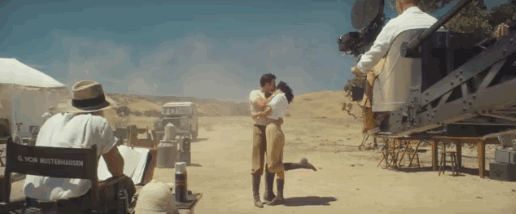
5. Mise en scene
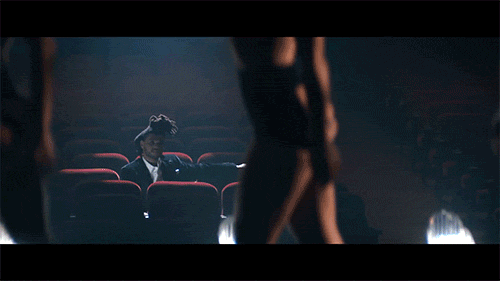
Oftern in modern pop music videos the artists/characters change there costumes throughout the music video in order to keep the interest of the viewer. Often in pop music videos bright and colourful clothing is worn or clothing is worn which fits the narrative.
The lighting in pop music videos is often bright and full of colour to create a positive feel amongst the audience. However, this may differ due to narrative or genre of music such as rock, as in pop rock music videos the lighting may not be as bright and vibrant as rock is associated with darker and duller lighting.
6. Intertextuality
Intertextuality in pop music videos refers to what ideas and inspirations were used from separate pieces of work in order to make one idea.
For example, Little Mix's song, 'Black Magic' can be seen as getting it's inspiration from Clueless, Sabrina The Teenage Witch and The Craft. We can tell this through their typical 90s, geek, teen outfit of heavy back packs, glasses, interesting choices in knitwear and unbrushed hair; which would have been seen in the films they got their inspirations from. Another example could Ed Sheeran's song Shape of You. This song I believe could have got inspiration from films such as Creed, Rocky and Southpaw. In all films the boxers train in run down gyms as does Ed Sheeran in his video. Similarly, in all films and the pop music video, there is a love interest for the boxer.
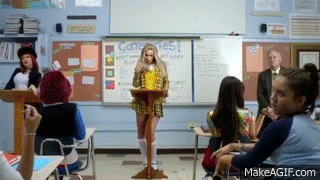
7. Voyeurism- How are females represented in pop music videos?

Female as a solo artist or in a all-girl band are objectified as a sexual object. Solo artists like Ariana Grande and Nicki Minaj are clear examples of voyeurism within pop. This is because they both wear little/revealing clothing or tight fitting in order to catch the gaze of men and to keep the attention of their target audience..
Similar Artists and Their Representations
Survey
In order to further gain knowledge about our target audience and their preferred genre, we conducted a genre survey in our school asking different questions to students aging from 16 to 19 year old. As it can be seen that our chosen genre, "pop" is the most popular among the students of our school.
Demographics and Psychographics of Audiences
Pop music is the most mainstream music given most airplay across radio and TV shows, therefore reaching a mass audience. This mass audience is outweighed by people aged between 8 and 22 contributing to a major value of listening figures. These are the target audience for our music video as well. People of these ages generally fall under the lowest category of the demographic scale meaning that producers make certain choices to direct their product towards these targeted groups and maintain a consistent fan-base. For example, music and visuals will be available straight away on platforms used by teenagers such as Spotify and YouTube at no cost. Advertisements will be deliberately placed in places where young people go such as city's/towns, bus stops and near universities to catch their attention and encourage them to purchase the product.
Demographics also effect the production of pop themed media texts outside of marketing too, these being through creating representation and meaning within the product relative to that of the interests of the target audience. For instance, this includes products such as music videos and teaser trailers. Content of these videos will vary dependent on the intended effect the institution wish to create. Mise-en-scene is adjusted relative to this, for the soul purpose of capturing the audiences interest encouraging them to consume the product.
Application of psychographics' table to consumerism of media products from the music industry would be, for instance, rap music is often aimed at strugglers to take their mind off their current situation and make them believe they may escape it one day. This music generally reflects their way of life subjecting around drugs, sex, alcohol and partying. Unfortunately, the artists are often misleading, exaggerating their situation and building a sense of false hope for the listeners, keeping them listening to the music as it makes them feel better about themselves.
Learning Experience
My team and I went to City 42 a popular news channel of our country, and learned many different shooting skills including camera angles, tracking, panning and editing. We had a crash course about adobe premiere by a professional and went to the control room where all the communication with the anchors in front of the camera was done.
Pop Music video analysis
Perfect- Ed Sheeran

Synopsis
The video begin with Ed Sheeran (the main character) travelling while looking at a picture of his love. It’s probably a reunion of old friends as they all gathered at the same spot. They then started their journey but Ed’s attention was caught by his ‘crush’ as he kept looking at her and got jealous as she sang and enjoyed with other guys. To get her attention, he waves or uses his hands, etc. Later they get to be alone together. Ed sings a song for her and they also dance in the snow at night.


Concept
The concept of this video can be grasped by those who’ve fallen in love or have been in relationship. Ed misses this girl and writes a song about her and lets her know how he feels about her and how ‘perfect’ she is. People watching this video can now go to their own fantasy world and imagine themselves dancing with their loved ones and holding them in their arms. As mentioned in the lyrics ‘we were just kids when we fell in love’, this could be relatable for those who’ve known each other since their childhood, but then that friendship took a step forward and turned into love.


Relations of the visuals and lyrics
The relationship between the visuals and the lyrics are the strongest at the end. “Dancing in the dark, with you between my arms”, fits perfectly with them actually dancing in starry night sky. “Barefoot on the grass”, only, they’re dancing on snow. The lyrics also match the song when the girl gives Ed a guitar and he actually sings along with the song. “We are still kids, but we’re so in love”, is sung when the two are snowball fighting like little kids and making angels on the ground.


Shots and editing
Shots are mostly two-shots, establishing a strong bond between the two lovers. Some of them are long shots, helping the audience see the background and revealing their location. Some close up shots include their smiles, conveying the message to the audience that its not just a one sided love story. We’d probably see a happy ending. Ed being shown from a low angle and the girl from a high angle clearly shows that he has won the girl’s heart. And the two sleeping with each other at the end further strengthens this point.
Theories
Several theorists can fit in the music video. The most prominent one being Andrew Goodwin. He says that a music video is just the extension of the lyrics. The video provides us with this evidence as we can see more emotions in the video, Both have them are literally in each other’s arms. So there’s a strong relation between the visuals and the lyrics.
Richard Dyer’s Star theory can also work here. Ed Sheeran is known for his music and his videos that revolves around love and relationships, and sometimes heartbreaks. So he now has an identity of his own.
Audience
The video targets generally people in late teens and their early to mid 20s. This is the time when people usually find love and they listen to such songs to get into such a mood. They fantasize themselves as if the song was written for them and they imagine such a scenario in their head with their loved ones.
F.R.I.E.N.D.S- Marshmello&Anne Marie

Synopsis
A guy in a Marshmallow suit wants to be ‘more then friends’ with a girl (Anne Marie), but she doesn’t feel the same way for him. So the guy tries several ways to be with her. He tries to clean up the mess after a party at her house. He’d hide in her closet. He won’t leave her house. He’d try to get her attention but Anne tries to kick him out of her house. But in the end, Anne and her friends welcome Marshmallow and give him a hug.

Concept
The concept of this video revolves around the “friendzone”. It’s a place where your crush doesn’t sees you or lets you be more than friends. For many people, it’s the pit of despair. Like every average guy, he goes through several attempts to change her mind and to accept him as who he is. Like every girl, Anne tries to resist him because she only sees him as a friend. It’s a typical everyday case in the society now.


Relation of visuals and lyrics
The relation between the visuals and lyrics are mostly performance based. Whenever the chorus of the song comes, we see Anne actually singing the song while making facial expressions. Also there’s a part when Anne completely ignores Marshmallow when she puts on her headphones and pretends he isn’t there. The music volume also turns low as if she’s actually listening to the song on her headphones.

Shots and editing
The shots are taken with Anne and her friends in the background. This shows that she has the full support of her friends. Marshmello is mostly shown alone and the pictures in his room show his desperation. The video has a medium paced editing except for the part where the beat kicked up a notch. Most of the scenes were also changed with the beat, transitioning from one scenario to another. The sound of the lightening is not part of the song and yet we can hear it in the music video. Also, the volume of the music also decreases to show that Anne was actually listening to some music in order to ignore Marshmello.
Theories
The most prominent music video theorist that we can fit in the video is Andrew Goodwin’s cut-to-beat theory. This is the concept of ‘seeing sound’. We can detect it as the scenes change in accordance with the beat or when the video becomes a bit faster.
Vernallis states that Music videos are sometimes fragments. In one one part we see Marshmello in his own house and then we see him outside Anne’s house. Sometimes we see him in her closet, her bed and even in the room with no logical explanation of how he got there. So we just assume he was there the whole time.
Dyer’s Star theory also comes into effect as we’ve never seen Marshello’s true face. He always wears his marshmallow costume in every video. So the costume has become his identity. The white outfit and his mask.
Audience
The video is quite colorful and the term ‘friendzone’ is recognized by every single teenager. Since the music video is based on this term, and Marshmello tries rather very childish attempts to get in Anne’s good light, the targeted audience 16 to 23.

